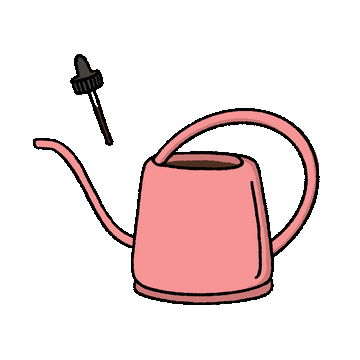During a recent ASK US ABOUT PLANTS session on Instagram, one of us (no judgement, plenty of shame) responded a question about Anthuriums with a whole heap of info on Caladiums. A momentary brain freeze I'm sure, but embarrassing enough all the same. Given that that answer has now been erased from the Instagram archives, it seems a blog post might be the best way to regain that sweet sweet Caladium street cred.
Caladiums! Where to start? If you haven't heard of them, you've probably seen them. And if you haven't seen them, you're about to. If these guys were an animal, they'd be a peacock and as big time heat lovers, they reward you with some showy-as foliage for almost three quarters of the year (longer if you play your plant parent cards right!). No need for flowers when you have a Caladium in the house - they are stunning.
Think big (up to 30cm!), heart-shaped leaves floating atop long thin stems. Leaf patterns can range from spotted, mottled, veined, marbled, or even striped. Some will have coloured veins or boarders. Colours can be white, green, red, pink or even silver.
And despite being grown for their foliage, they also produce a flower. Small and insignificant, they look like small spikes (spathes), although compared to the coloured foliage they barely worth a mention. In fact, if you see a flower start to develop, feel free to cut that bad boy right off so you can be sure the plant is directing maximum energy into its foliage.
Caladiums are seasonal tubers, meaning come winter, they'll die back and wait for things to warm up again. When this happens, remember what you're dealing with and don't freak out. Simply snip off the withered leaves, cut out the watering and place the pot somewhere dark at around 20°C. Bring out again when things start to warm up and slowly increase the watering. It's round 2 baby!
Caladium Indoor Care
Light
Bright, indirect light. They can tolerate shade indoors but the brighter the better. The thin, papery leaves make them super susceptible to leaf burn so steer clear from anything more than a little morning sun. Hot tip: The narrower the foliage, the more light the plant can tolerate.
Potting
A peat moss or coco coir based mixed is ideal. Well draining and moist
Water
Once the leaves have arrived you want to make sure that potting mix is kept evenly moist. Once you notice the leaves have started to die back, stop the watering completely.
Fertiliser
Fertilise fortnightly with a high nitrogen liquid fertiliser (so the N value should be sitting around 10+). Again, once the plant looks like its about to go dormant, cut that feeding regime right out.
Trouble Shooting
Trust me, you'll know when something isn't right with a Caladium. The two most common problems are foliage turning yellow, or foliage turning brown.
Yellow Foliage
Overwatering: Yellow leaves can occur from overwatering. If your potting media is super moist, and the leaves a turning yellow, maybe take it down a notch.
Underwatering: Same as above, but if the media is real dry, think about stepping the watering game up
Nutrient deficiency: Yellow leaves could also be the sign of nutrient deficiencies, although if you're using a good, complete liquid fertiliser this shouldn't be too much of an issue.
Brown Foliage
Brown Foliage is usually attributed to not enough humidity, too much direct sunlight, or over fertilising.
Just remember that Caladiums are toxic to humans and pets, so no nibbling!



Leave a comment